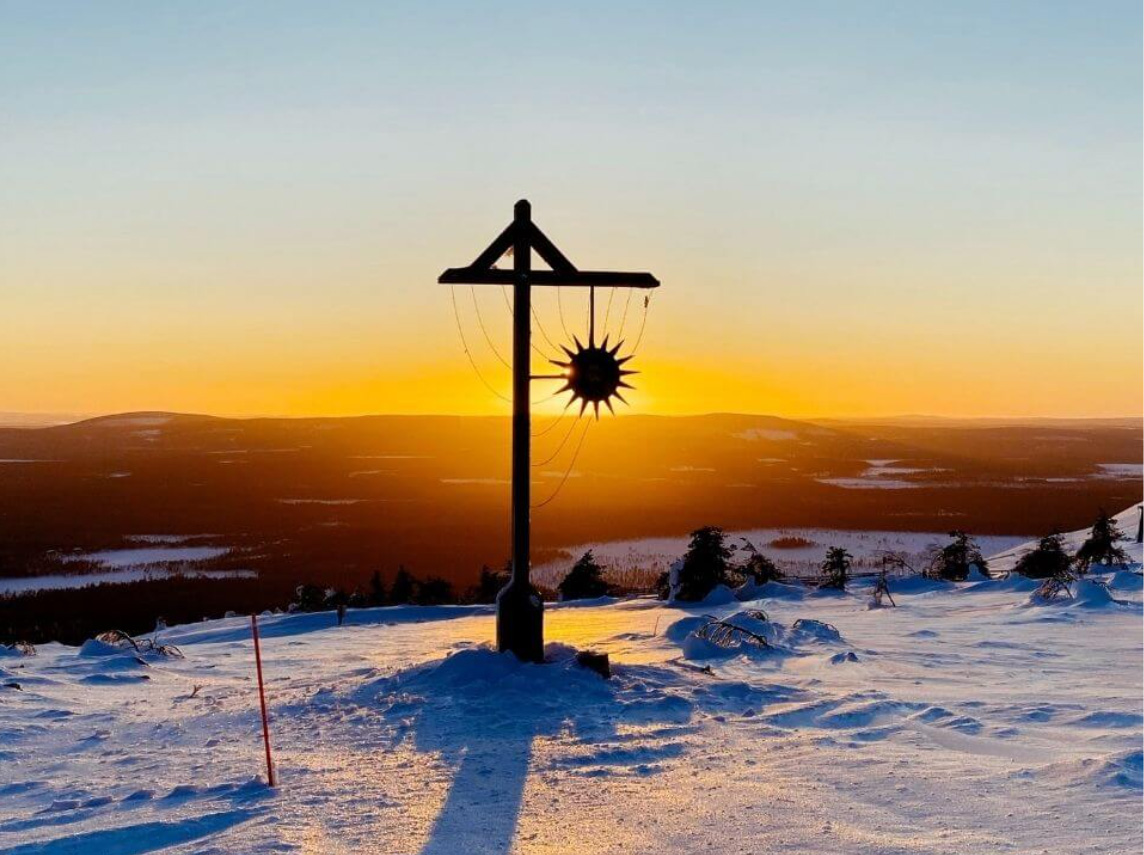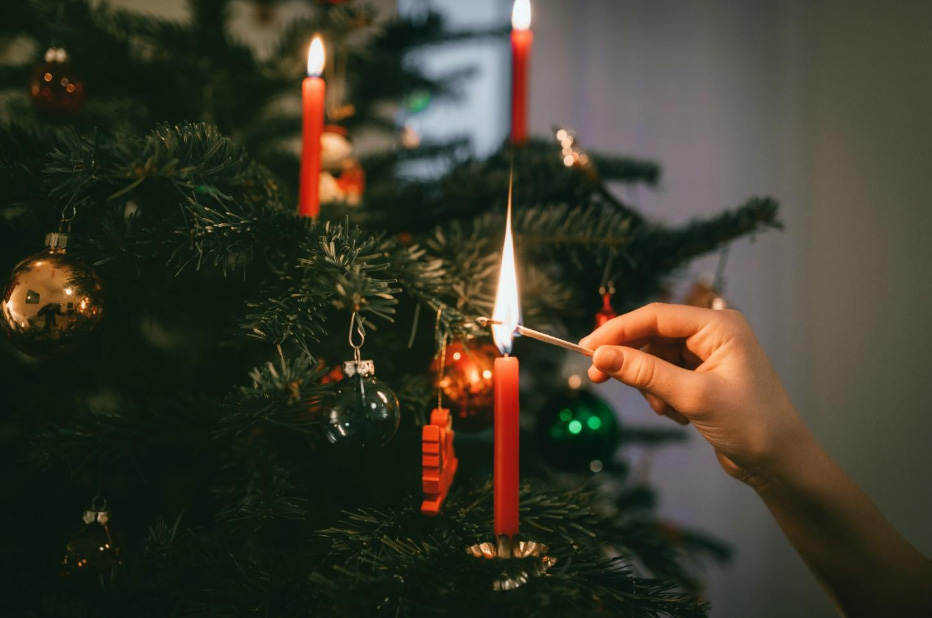The Winter Solstice According to Astrology: Rituals to Celebrate

Winter solstice rituals have a surprising cosmic history that dates back to ancient times.
The winter solstice and Capricorn season officially begin on December 21. This significant date has many connections to astrology and spirituality. Solstice periods have their roots in nature-based spirituality that honored the planets. They are used to drive away evil spirits, perform fertility rituals, or engage in hedonistic festivals.
1. The Northern Hemisphere’s winter solstice marks the year’s shortest day.
The solstice is when the Sun appears to stop moving forward through the sky for three days. If you live in the Northern Hemisphere, the solstice occurs on December 21. The summer solstice takes place on June 21 during this “standing still” period.
Why do we have solstices in the first place? The opposing northern and southern regions of the planet receive more or less daylight as the Earth revolves around the Sun, which, among other benefits and drawbacks, gives us our four distinct seasons.
The Sun has lowered to its lowest point in the sky from our Northern Hemisphere vantage point above the equator. After the winter solstice, the Sun will appear to turn, moving upwards each day to the Tropic of Cancer. The Northern Hemisphere enters its first day of winter on the December Solstice.
2. Solstice rituals have roots in paganism, including Saturnalia, Yule, and solar festivals.
Saturnalia, a Roman festival, was the main holiday on the late December calendar long before Christmas as we know it today.
Saturnalia, or Saturnalia, was known for its drinking, revelry, and open sex. This carnal carnival, which bears the name of the god Saturn, essentially celebrates the winter solstice’s dark days as the Sun moves through Capricorn, the sign that Saturn rules.
December 25 was chosen as the triumphant day the Sun “reappeared,” resuming its apparent movement on the ecliptic.
Mithras was the god of light and messenger of the Mithraic Mysteries, and Sol was figuratively the divine sun. Gifts were exchanged in honor of Mithras and Sol, a custom that persisted in our Christmas Day celebrations. The Romans would eventually worship Sol in the form of an official Roman religion.
The “Son of God’s” birthday was changed from the Sun God’s birth to that of Jesus after Constantine the Great made Christianity the state religion of the Roman Empire in AD 325.
It is a condensed version of “Christ’s mass,” also known as Cristes Maesse. The term Cristes-messe was used after this in 1131, according to The Catholic Encyclopedia.
Christmas is a syncretic (blended) holiday with many ritual components drawn from Asian and European pagan traditions. Charles Dickens’s A Christmas Carol helped popularize the idea of Christmas in America.
It’s not quite the pure, family-oriented holiday that has come to represent the Christmas season in our modern world. However, these are its historical origins.
3. The winter solstice was also a time of remembrance and communion with the dead in some cultures.
Pagan and nature-based traditions use it as a time to commune with the dead and ward off evil from the previous year before the Sun’s rebirth.
Ebenezer Scrooge from Dickens’ A Christmas Carol was visited by the Ghost of Christmas Past during the winter solstice. The astrological lore also supports the link between the solstice periods and specters. (The summer solstice and Cancer stand for “the gate of arrival” for souls).
The oak Yule log is a descendant of the massive bonfires that European pagans lit around the time of the winter solstice. The white berries on mistletoe were thought to have magical powers according to the Druids. Other solstice ceremonies come from Scandinavian customs that value fertility.
In ancient times, the Yule log was seen as a kind of phallic torch, lit to encourage virility while bringing strength, healing, and wisdom to a community. May the log burn/May the wheel turn/May evil spurn /May the Sun return is the refrain of an antiquated Yulelog song.
4. The winter solstice marks the beginning of the Capricorn season in astrology.
In Western astrology, the Capricorn season begins on the winter solstice. The Sun appears to cross the Tropic of Caprics directly at this time.
As the Sun enters Capricorn, the resolution revolution begins in earnest. Despite the holidays, now is the best time of year to set goals for the coming year. To design your dreams in the most fulfilling way, become aware of your feelings and repressed desires.
5. Is the winter season officially underway on the winter solstice?
Depends. The Old Farmer’s Almanac offers these two definitions of winter:
- Astronomical winter, The Western (tropical) astrology calendar charts the Sun’s journey through the Zodiac, our chart of the sky as seen from Earth.
- Meteorological winter, which in the Northern Hemisphere runs from December 1 to either February 28 or February 29. Climate patterns and temperature cycles serve as the foundation for meteorological seasons.
6. You can celebrate the winter solstice on your own terms. Try one with an international and astrological twist.
The spiritual symbolism of light is emphasized during the December holidays all over the world. “Materialism has largely displaced the spiritual significance of the holidays in modern society,” says Dr. Gabrielle Francis.
The Newgrange monument is a 5,000-year-old burial mound with a long chamber aligned with the Sun’s first rays at the winter solstice. It is only accessible to a select few people in Ireland thanks to a lottery and is located in County Donegal. The author suggests using intention to design rituals that are special to us by using intention.
Lighting a bonfire, burning a Yule log, or baking a traditional dish can add a touch of astrology zodiac sign to your winter solstice celebrations. A hot beverage like wassail dates back to ancient fertility rites and is a forerunner to Christmas caroling.
7. Pine cones shouldn’t be forgotten!
Since Capricorn is an earth sign and the winter solstice has natural roots, you could also honor the Earth itself. Dress warmly for a walk in the woods, then make a tablescape out of natural elements.
Pine cones are symbolic of the winter solstice. Some believe they represent the pineal gland and the third eye, the entrance to the spiritual worlds.
Give your wreaths and tree a festive makeover for the winter solstice and Christmas by adding lovely pine cones.
Greetings on the solstice!


